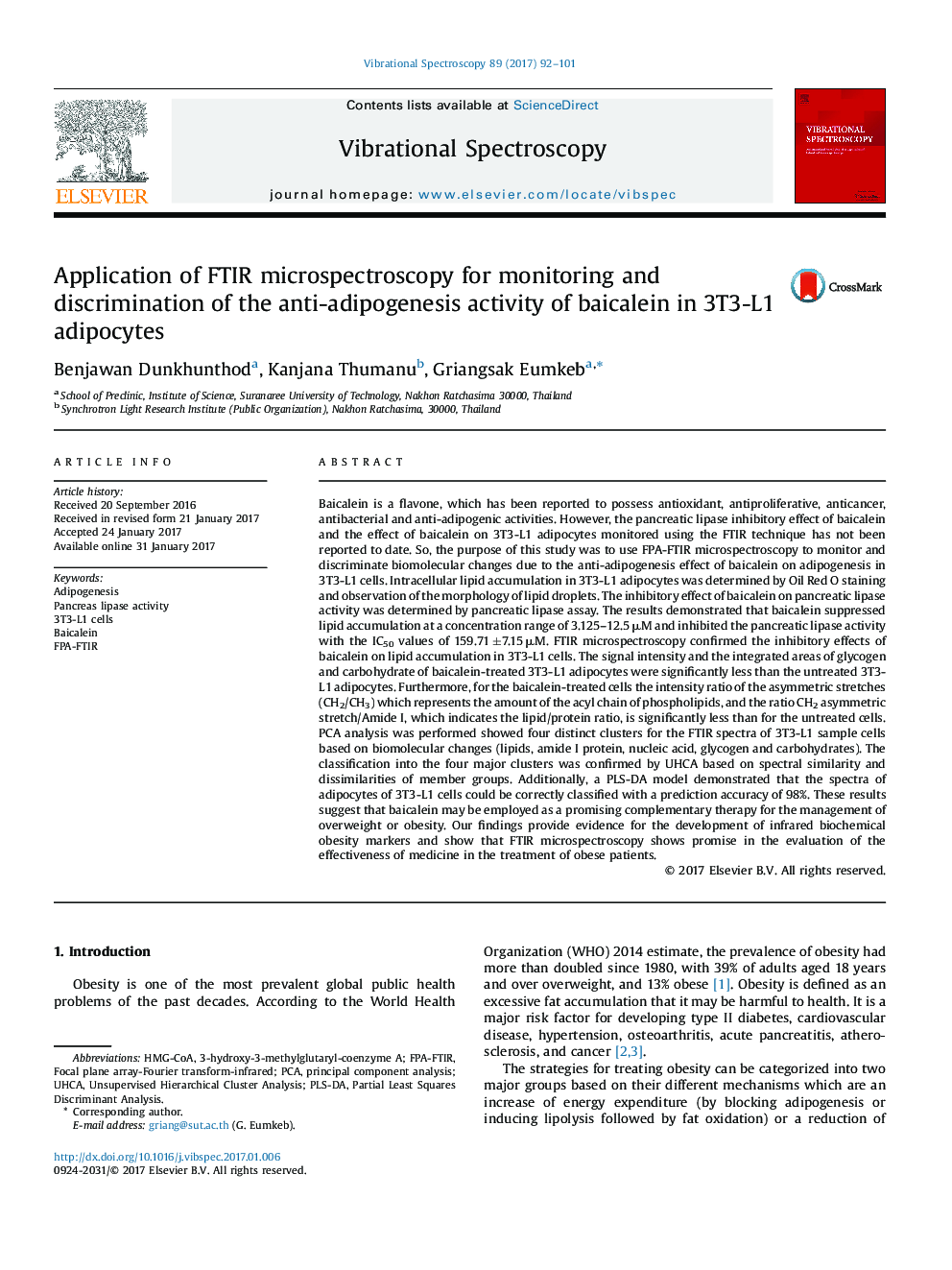| Article ID | Journal | Published Year | Pages | File Type |
|---|---|---|---|---|
| 5141982 | Vibrational Spectroscopy | 2017 | 10 Pages |
Abstract
Baicalein is a flavone, which has been reported to possess antioxidant, antiproliferative, anticancer, antibacterial and anti-adipogenic activities. However, the pancreatic lipase inhibitory effect of baicalein and the effect of baicalein on 3T3-L1 adipocytes monitored using the FTIR technique has not been reported to date. So, the purpose of this study was to use FPA-FTIR microspectroscopy to monitor and discriminate biomolecular changes due to the anti-adipogenesis effect of baicalein on adipogenesis in 3T3-L1 cells. Intracellular lipid accumulation in 3T3-L1 adipocytes was determined by Oil Red O staining and observation of the morphology of lipid droplets. The inhibitory effect of baicalein on pancreatic lipase activity was determined by pancreatic lipase assay. The results demonstrated that baicalein suppressed lipid accumulation at a concentration range of 3.125-12.5 μM and inhibited the pancreatic lipase activity with the IC50 values of 159.71 ± 7.15 μM. FTIR microspectroscopy confirmed the inhibitory effects of baicalein on lipid accumulation in 3T3-L1 cells. The signal intensity and the integrated areas of glycogen and carbohydrate of baicalein-treated 3T3-L1 adipocytes were significantly less than the untreated 3T3-L1 adipocytes. Furthermore, for the baicalein-treated cells the intensity ratio of the asymmetric stretches (CH2/CH3) which represents the amount of the acyl chain of phospholipids, and the ratio CH2 asymmetric stretch/Amide I, which indicates the lipid/protein ratio, is significantly less than for the untreated cells. PCA analysis was performed showed four distinct clusters for the FTIR spectra of 3T3-L1 sample cells based on biomolecular changes (lipids, amide I protein, nucleic acid, glycogen and carbohydrates). The classification into the four major clusters was confirmed by UHCA based on spectral similarity and dissimilarities of member groups. Additionally, a PLS-DA model demonstrated that the spectra of adipocytes of 3T3-L1 cells could be correctly classified with a prediction accuracy of 98%. These results suggest that baicalein may be employed as a promising complementary therapy for the management of overweight or obesity. Our findings provide evidence for the development of infrared biochemical obesity markers and show that FTIR microspectroscopy shows promise in the evaluation of the effectiveness of medicine in the treatment of obese patients.
Related Topics
Physical Sciences and Engineering
Chemistry
Analytical Chemistry
Authors
Benjawan Dunkhunthod, Kanjana Thumanu, Griangsak Eumkeb,
